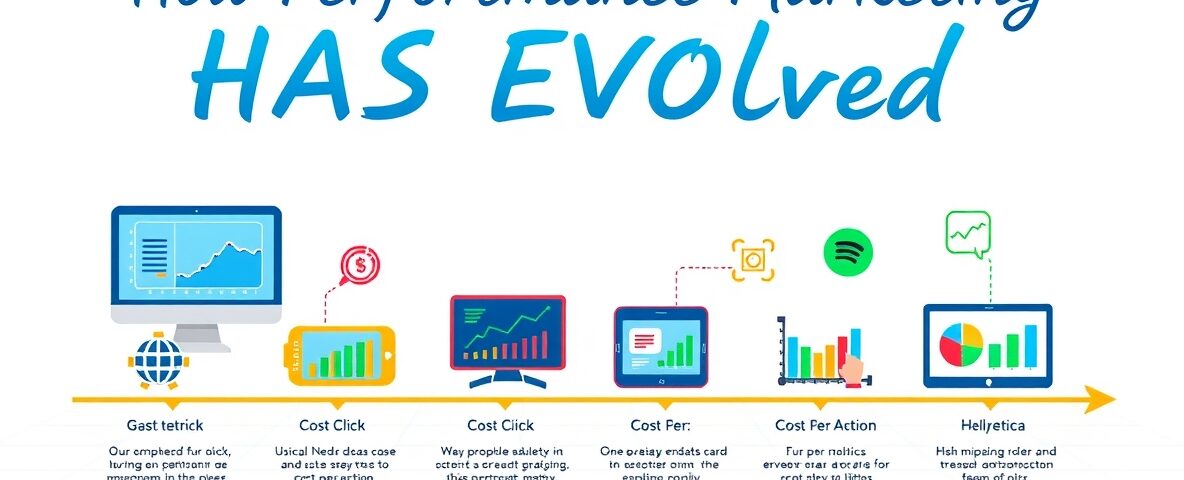
How to Succeed with B2B Lead Generation in the Digital Era
September 2, 2025
Managing the Challenges of B2B Data in Singapore
September 2, 2025Performance marketing has come a long way since its inception. What started as a simple model of paying for clicks has evolved into a sophisticated system of tracking and optimizing marketing campaigns to deliver measurable results. In this article, we’ll take a look at the evolution of performance marketing, from its early days of CPC to the more advanced models of CPA and beyond.

CPC (Cost-Per-Click) Model
The CPC model was the original model of performance marketing. In this model, advertisers paid publishers for each click their ads received. This was a simple way to measure the effectiveness of an advertising campaign, as the advertiser only paid for clicks that led to a visit to their website. This model was popularized by Google AdWords, which allowed advertisers to bid on keywords and pay for clicks.
While the CPC model was effective at driving traffic to a website, it had its limitations. Advertisers could not control the quality of traffic they received, as they paid for every click, regardless of whether the click resulted in a conversion or not. Additionally, there was no way to track the performance of an ad beyond the click.

CPA (Cost-Per-Action) Model
The CPA model was introduced as a way to address the limitations of the CPC model. In this model, advertisers only paid publishers when a specific action was taken, such as a sale or a lead. This allowed advertisers to measure the effectiveness of their campaigns based on the actual performance of their ads, rather than just the number of clicks.
The CPA model was a significant improvement over the CPC model, as it allowed advertisers to pay only for results. This model also gave advertisers more control over the quality of traffic they received, as they could set specific criteria for the desired action, such as a minimum purchase amount or a required form fill.
However, the CPA model was still limited in its ability to track the performance of an ad beyond the desired action. Advertisers could not see how their ads were performing at each stage of the customer journey, which made it difficult to optimize campaigns for maximum effectiveness.
CPL (Cost-Per-Lead) Model
The CPL model was a variation of the CPA model that focused on generating leads for advertisers. In this model, advertisers paid publishers for each lead that was generated, such as a form fill or a phone call. This model was particularly popular in industries such as finance and insurance, where generating leads was a critical part of the sales process.
The CPL model allowed advertisers to pay only for the leads they received, rather than for every click or impression. This made it a more cost-effective model for lead generation, as advertisers could avoid paying for low-quality leads. However, like the CPA model, the CPL model did not provide advertisers with the ability to track the performance of an ad beyond the lead.

CPS (Cost-Per-Sale) Model
The CPS model was introduced as a way to measure the performance of ads based on actual sales. In this model, advertisers only paid publishers when a sale was made. This allowed advertisers to measure the effectiveness of their campaigns based on the revenue generated by their ads, rather than just the number of clicks or leads.
The CPS model was a significant improvement over the CPA and CPL models, as it allowed advertisers to measure the true ROI of their campaigns. This model also gave advertisers more control over the quality of traffic they received, as they could set specific criteria for the desired sale, such as a minimum purchase amount or a required product.
However, the CPS model was still limited in its ability to track the performance of an ad beyond the sale. Advertisers could not see how their ads were performing at each stage of the customer journey, which made it difficult to optimize campaigns for maximum effectiveness.


